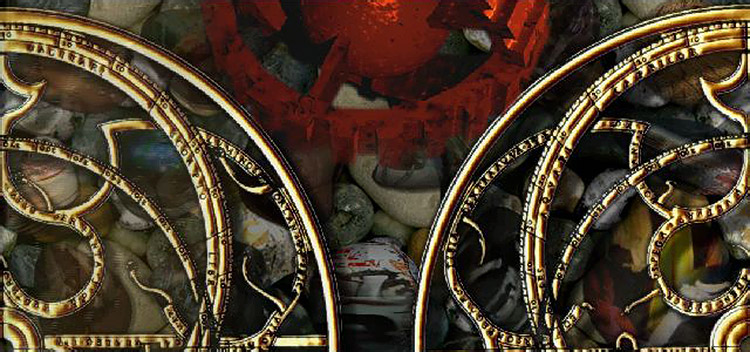
In 1996 after 5 years working to establish Artec as both the primary source of talent for the then nascent digital media industries and a centre for experimentation with technologically driven arts practice, I found myself surrounded by artists using our Multimedia Lab to explore how their practice could be transformed by the new technologies it placed at their disposal. I had no desire at the time to enter the world of gallery based visual arts practice. I was working primarily in digital sound design and music and providing support to lab resident visual artists wanting to incorporate sound in their work. However, it occurred to me that a medium had evolved that would allow me to explore a theme that had absorbed me since I began playing percussion at the age of 16. I was interested in how musical traditions and genres evolved out of a process of cyclical retrospective referencing. I found that this process demonstrated a deeply fundamental human process – culture.
Professor Paul Gilroy’s essay, “It ain’t where you’re from, it’s where you’re at” from his book “Black Atlantic”, affirmed an important thesis that separated culture as a dynamic process or force powered by migration from tradition which is fixed in time (history) and space (geography). It disrupts attempts to fix ‘blackness’ or ‘whiteness’ historically. My research took me to the impact of the Moors on European tradition during Europe’s so-called dark ages and therefore on ‘Western’ culture – bringing universities to European education, harmony to European music, and so much more. I already knew that the Black art-form known as Jazz owes as much to the ‘European’ harmonic traditions that ensued as it does to African rhythmic and improvisational traditions. Migration is therefore as important to human existence as the circulation of blood around the body. These concepts are as important to consider when engaging in discourse around race politics as when engaging in cultural practice. The medium that was evolving around me with its non-linearity and interactivity seemed to provide the ideal platform for an exposition of these ideas.
Permanent Revolution Part II was a physically interactive architectural installation, a collaboration with visual artist Keith Piper exhibited at the Photographers’ Gallery as part of Translocations (London & New York 1997). It was structurally defined by three large white walls arranged to form a triangle reflected the so-called Black Triangle of the slave trade – the forced migration that shaped the modern world as we know it. These walls were to be used to project images that would surround those engaging with the piece. Keith created a looped hypbrid animation-film sequence featuring pebbles thrown onto the beach by tidal sea waves. Each pebble was actually a discreet ‘sprite’ for which I created a specific film or animation that was mapped to each pebble in response to specific triggers. Each ‘pebble-animation’ had a corresponding ethno-traditional or genre specific musical sequence. The musical sequences were discreet, but also part of larger whole composition.
Under the floor of the installation was an array of pressure pads each of which would trigger/reveal a pebble animation-sound combination. The result being a cultural environment that would change sonically and visually depending on the locations and movements of people within the space. In this way I hoped to replicate the migration of peoples around the world engendering the very changes and cultural forces that my research had revealed to me.
——————————————–
Permanent Revolution Part I was a CD-ROM piece developed in Artec’s Multimedia Lab that preceded the installation and toured more extensively than Part II. The challenge of describing it in words will be risen to on a separate page at a later date.









